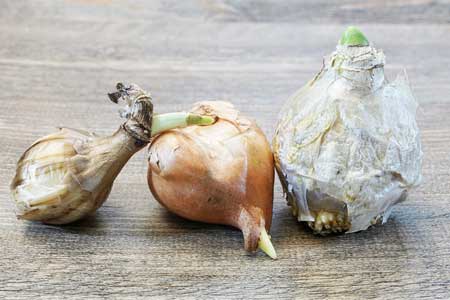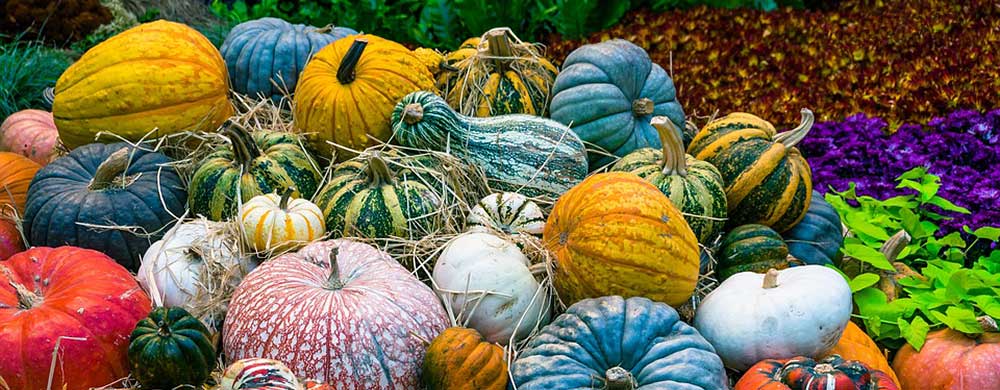April Gardening
Clean up, hedging, bulbs, and veggies
April is about planting spring bulbs and the sooner daffodils are planted, the better they will perform. Scatter a handful of Bulb Food over the planting areas. There are always a few places where a few more bulbs can be planted such as scatter plantings of bluebells and crocuses under deciduous trees, little dwarf tulips and irises tucked into rock gardens or fritillaria and dogs tooth violet enjoying some shady spots.
Plant Blubs for Spring Bloom
- The brilliant colours of tulips brighten up bare gardens, and when planted lavishly, will provide pristine goblets in vivid colours of red, orange, yellow, salmon, pink, white, maroon, purple as well as spectacularly striped blooms all through the garden. They are ever so appealing even when their voluptuously bent stems and slouching petals lean against their neighbours.
- The parrot tulips are a little more interesting than our friendly Darwin tulips but still easy enough to grow and well named as some of them reflect the gaudy colours of the parrot tribe.
- Good drainage should be considered when planting bulbs.
- Damp areas can be improved by raising the soil level up with plenty of peat added to the existing soil, then add a handful of sand in with each bulb planted.
Clean up
We have to face the fact that the garden has lost its youth and has become faded, mature and even over grown. Spruce it up with a bit of dead heading and removal of spent plants and plant out winter alternatives to give your garden a lift over the cooler months.
- Remove dead heads of dahlias, cosmos, begonias, petunias, daisies and along with a bit of weeding the garden is rejuvenated.
- Pots and window boxes need to be cleared of their collapsing summer display and replanted with winter colour pansies and primula or bulbs such as crocus and anemone.
- Variegated ivies will make excellent gap fillers in window boxes for the winter months.each bulb planted.
- Tender fuchsias in pots get stopped in their tracks with frost so shift them to a frost free area for winter.
- While it’s still fresh in your memory overhaul those groups of perennials whose colour combinations set your teeth on edge during summer and chop these summer sprawlers right down to ground level.
- Resist cutting back penstemons for they will try to make fresh growth that will be massacred by an early frost.
Japanese anemones are in flower now with a strange reminder of spring. Tall and bold, they spring up every autumn to provide flowers with the lightness of summer, and they flourish in part shade, in any soil condition, with stiff stems that never need staking.
Rule of thumb is: if the plant looks messy, tidy it up, and even if you want to redesign the border then go ahead. Now that the mad rush of summer growth has slowed down and the weed growth should have slowed down too, which means any weeding you do now should last more than a fortnight!
Hedges & Hedging
Autumn is the best time to plan and plant new hedges. Our garden centres are full of brand new nursery-fresh shrubs and hedging plants. Planting in autumn allows the winter rains to settle the plants into the ground enabling them to be off to a good start come spring growth.
Using hedge plants with small leaves that can be clipped tight look best when used within the garden as part of the general design. Large-leafed hedges can look chewed after trimming, and bulky coniferous hedges should be avoided in small gardens because they grow too fast and soon create a lot of shade that will make the space look smaller.
- Camellia, Laurel, Yew and Holly (choose a non-prickly variety) provide tough hardy shelter.
- Corokia varieties can be trimmed into both tall or low hedges very successfully because their dense upright growth is so easy to keep in shape.
- Low box hedges provide a defining edge to paths and lawns as well as giving a sense of formality to garden beds. They also help to add a certain amount of length perspective to your garden.
Vegetable Garden
- In the vegetable garden it is time to harvest pumpkins as their vines begin to die off. It is important to pick with a small piece of stalk attached because an open wound will rot. Test the skin with your thumb nail and if the skin is rock hard your pumpkin will keep for months. The pumpkin should sound hollow when knocked with your knuckles.
- Sow Blue Lupin seed in unused areas of the vegetable garden. Before it begins to flower dig this lush green crop into the soil for a natural way of improving soil nutrients.
- Sowing mustard seed is a good green manure crop too, but in our opinion, where the disease club-root is a threat then it is not a good idea to sow mustard seed where brassica are to be planted because the cabbage family and mustard family are very closely related.
- Hoe earth up around the leeks to encourage long white stems, and around your cabbages, cauliflowers, broccoli and brussel sprouts to stop strong winds from flattening them.
- Sow broad beans before mid-May at the latest for a good spring crop of pods packed full of nourishing protein.
- At the end of April start planting garlic. Garlic has been in cultivation since ancient times and is considered to be one of our most valuable plants. Detach each clove from the parent and plant in a well-drained position that gets full sun.
- Italian red skinned garlic has a rich medium flavour,
- Elephant garlic has huge juicy cloves of a mild flavour.
- Chinese garlic has the strongest flavour of them all.
Happy Gardening Everyone

12277